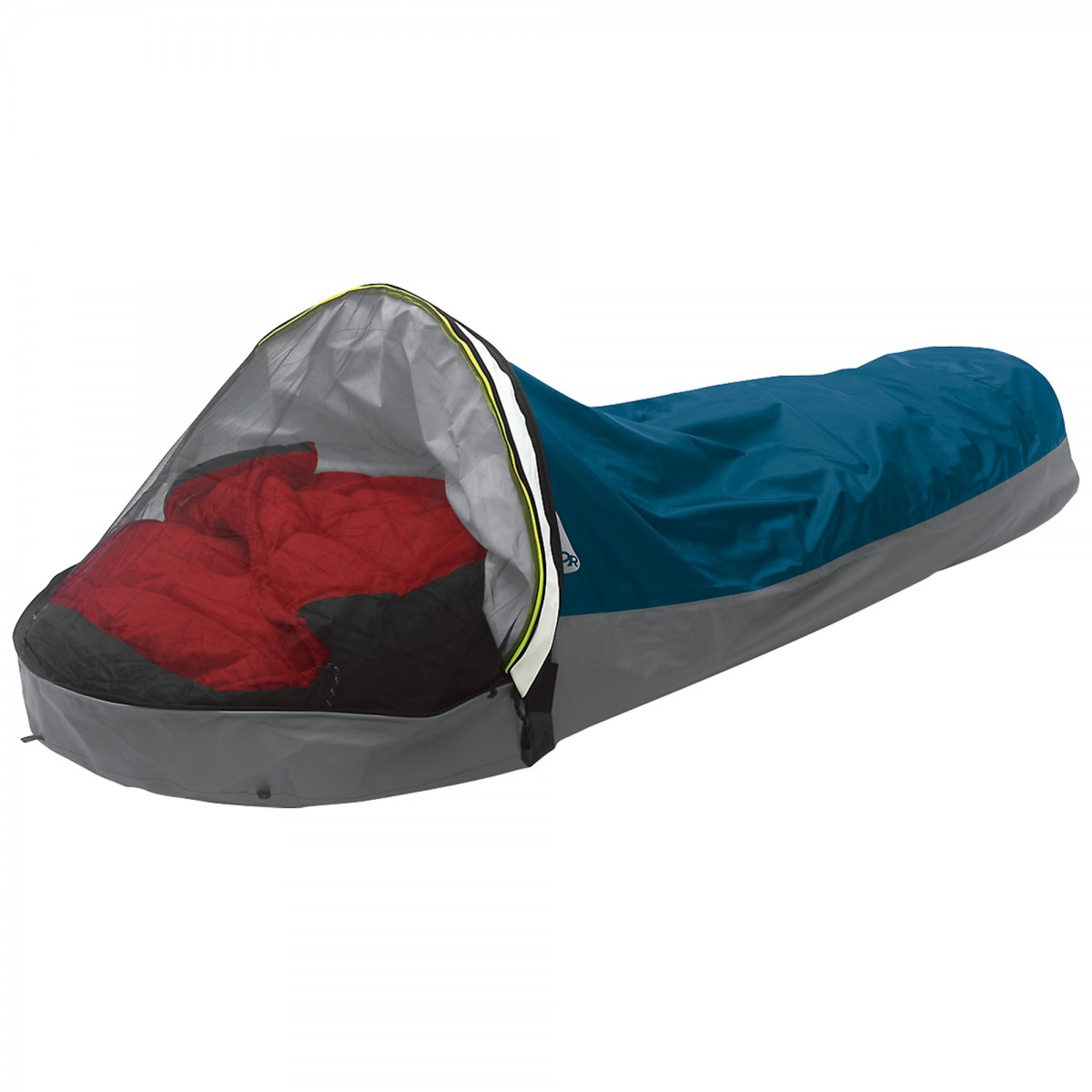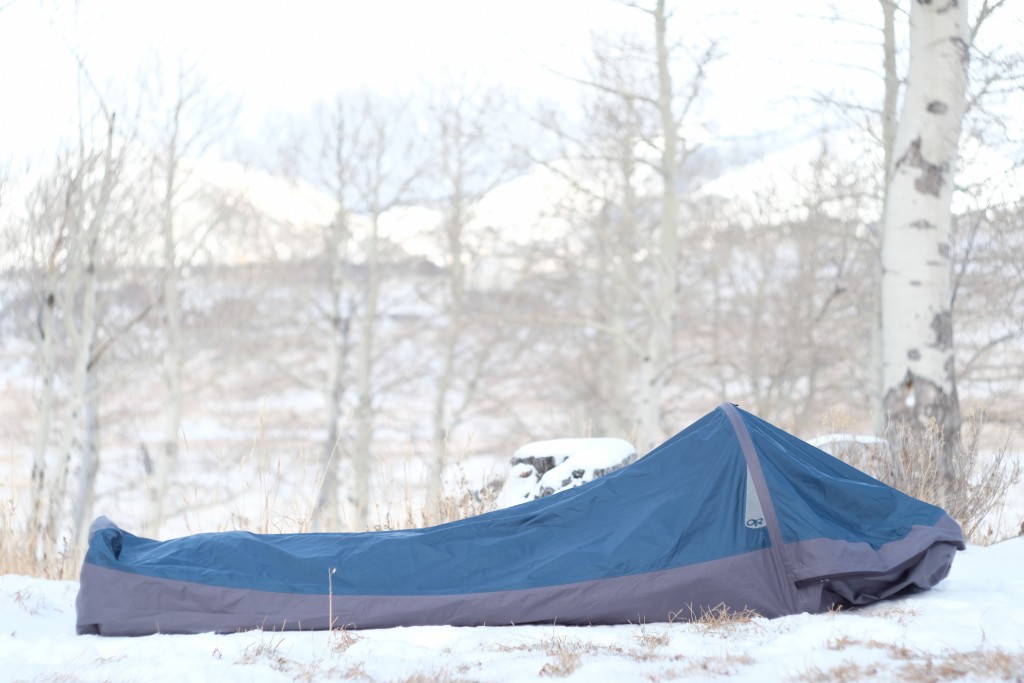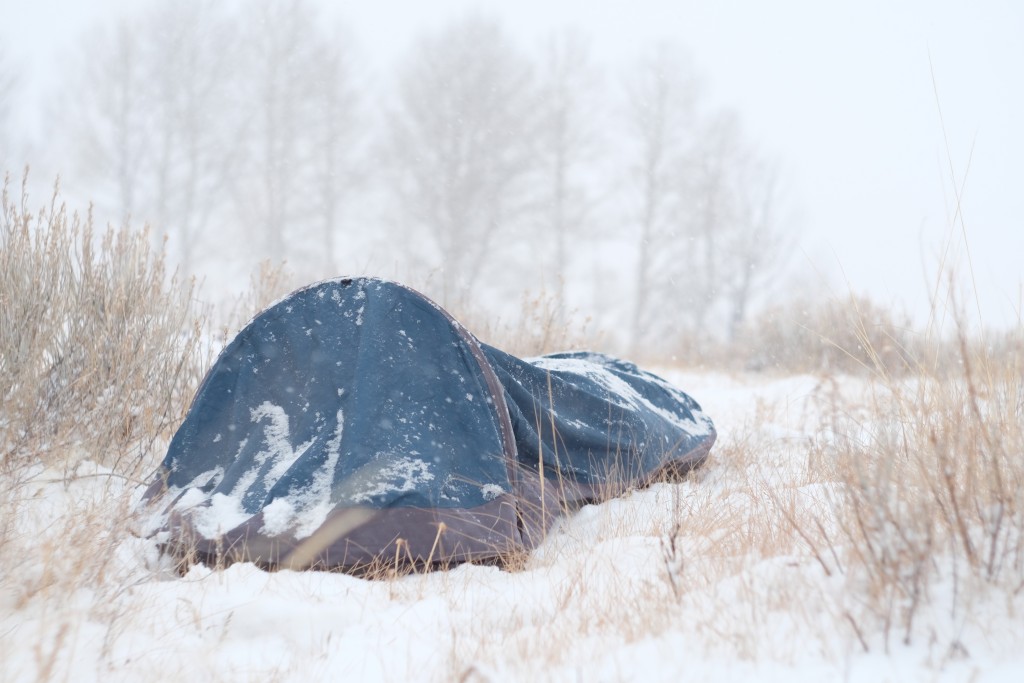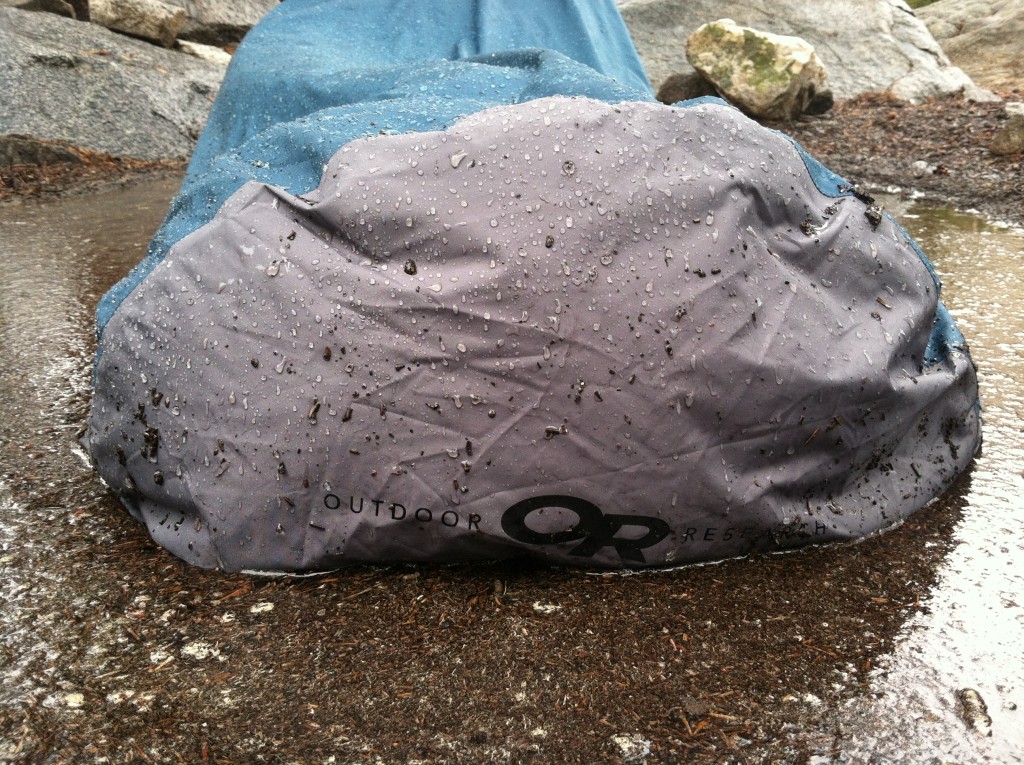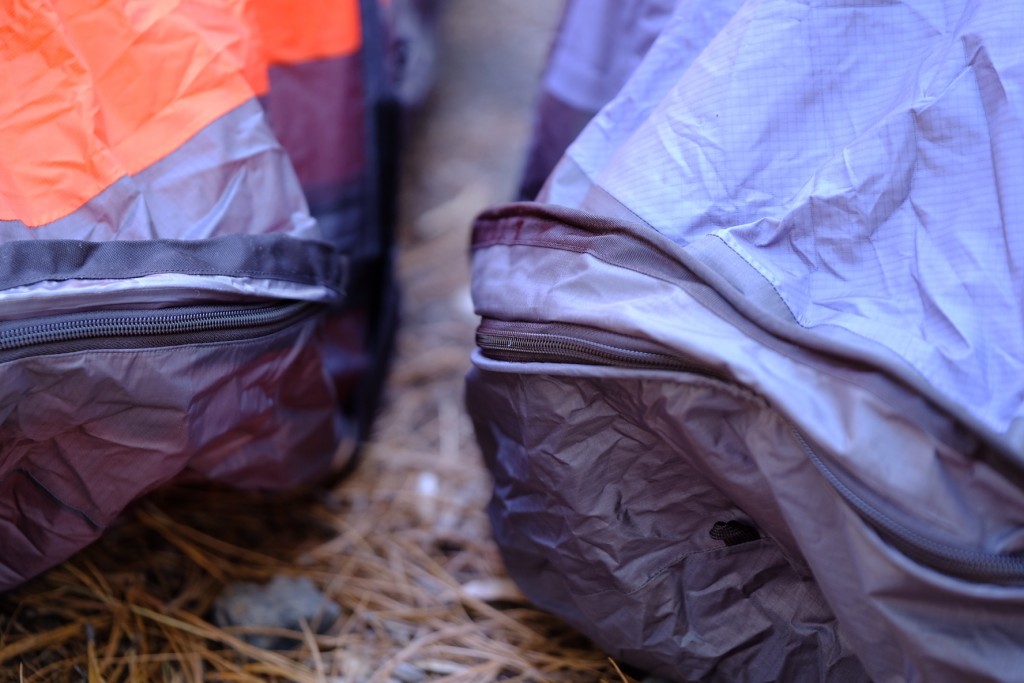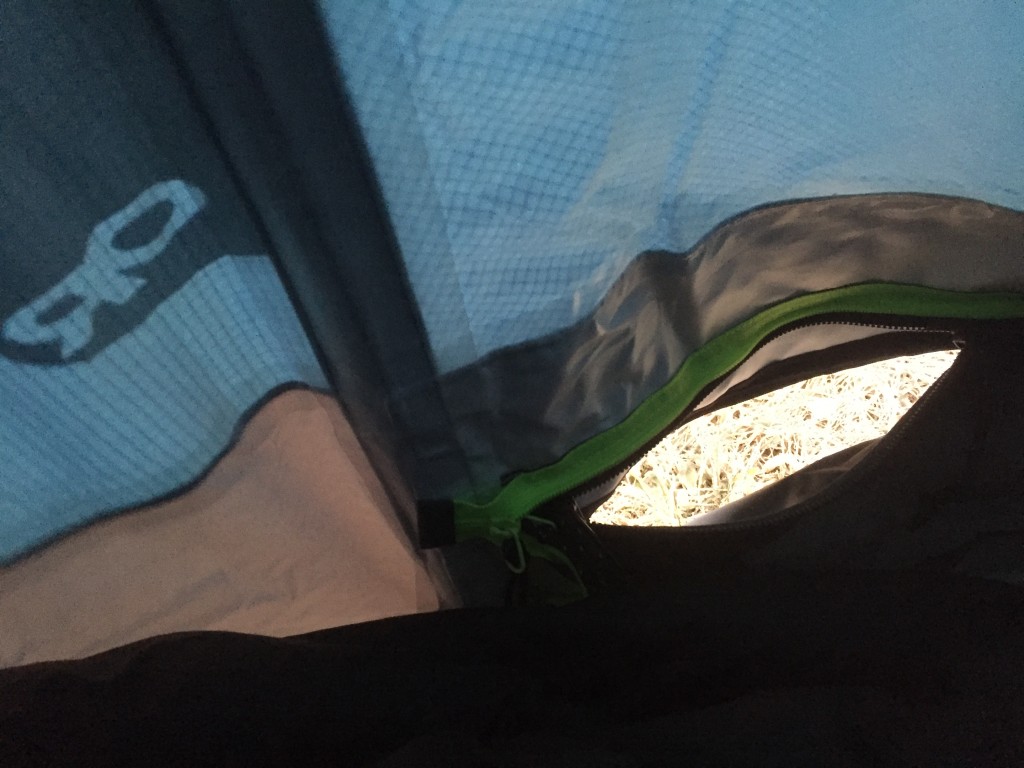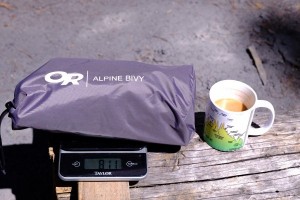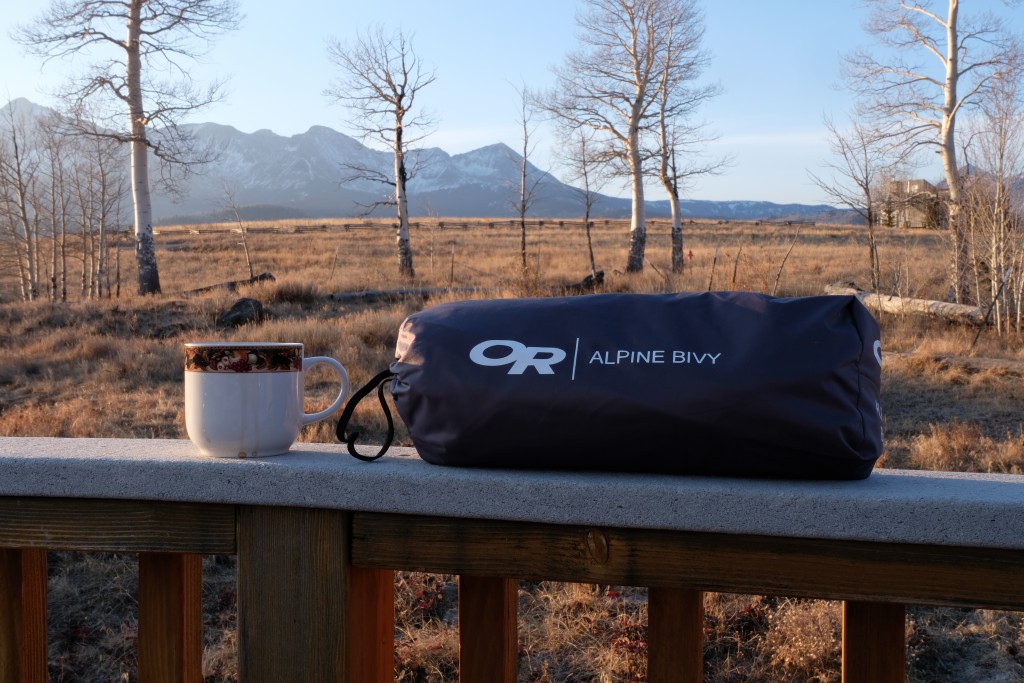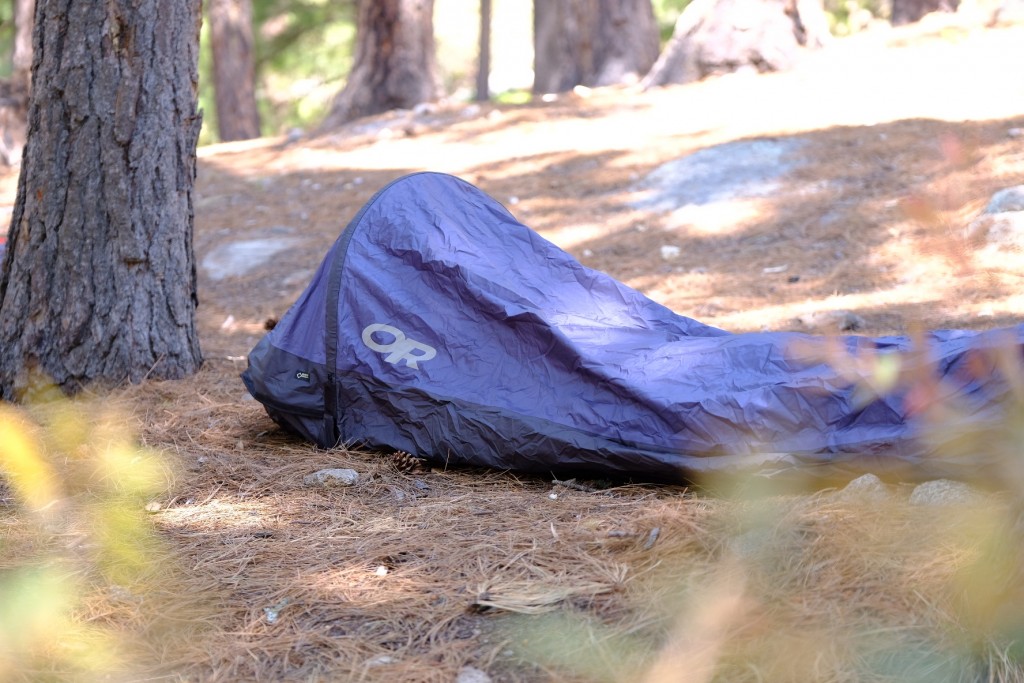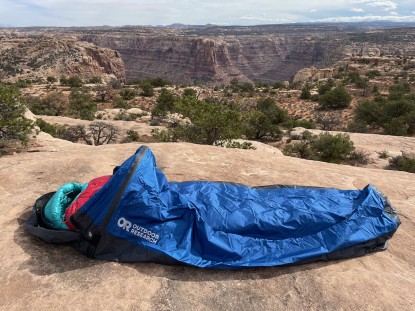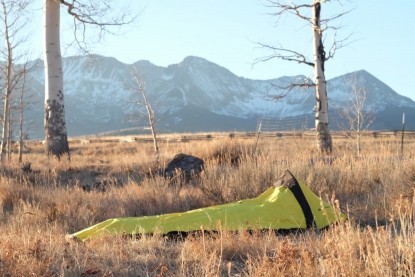Outdoor Research Alpine Bivy Review
Our Verdict
Our Analysis and Test Results
This product scored high in each metric and, most importantly, remained waterproof and breathable through each test. A good bivy should be a comfortable home in a storm for an extended period, and that's exactly what this bivy is. With great headroom, an optional bug net, and an utterly waterproof system, at 20 ounces, we just can't ask for much more. While some might find it a touch narrow, our tester (5'11" 175 lbs) fit easily with room to spare, even adding in a few pieces of gear that had to be kept dry.
Peformance Comparison
Weather Resistance
The OR Alpine is the only model tested that utilizes Gore-Tex waterproof material, an industry standard and trusted name in the world of waterproof/breathable fabrics. Three-layer Gore-Tex body is used on top of the OR Alpine bivy with a burly 70D nylon floor coated in Hydroseal for added waterproofness when in the wettest of deluges. During extended stays, our testers found proper ventilation by simply cracking the stiff zipper flaps a few inches near the head. Due to the bathtub design and zipper placement, this technique works even if pitched in a puddle! The 2019, lighter Alpine didn't show any diminished weatherproof capacity. Outdoor Research kept ultimate weather protection at the heart of this bivy, making sure not to create any vulnerabilities during the weight-loss process.
Deploying the Gore-Tex fabric over the face during a rainstorm is easy, even in the dark, thanks to reflective tape and a neon green ribbon running the length of the zippers. All seams are taped and five-stake loops, along with a single guy loop, aid in a comfortable pitch. We found that staking and guying out the OR Alpine was essential for maximum comfort and ventilation.
As you can see in the chart, the OR Alpine remains the most weatherproof bivy in our testing field. While it has been edged out by the OR Helium in a few other categories, the Alpine will always be our go to if massive storms or snow caves are in our near future.
Ventilation
This model performed very well in the ventilation category. While it is made of a completely waterproof fabric that is not known to breathe very well, it has several features that allow for added ventilation, making it easy to keep condensation down. In clear and warm weather the bivy can be left open, allowing warm air to circulate out.
Likewise, during colder nights, leaving a small opening in the zipper when wholly enclosed in the system is sufficient for staving off condensed breath from building up on the inside shell. This bivy can be staked out when ground and space conditions allow, and it also has a pole at the head to give space. These features are crucial to providing space between the bivy fabric and you, which lets air flow around and condensation escape more easily.
As with even the best ventilated waterproof bivies, it's likely you will still accumulate some moisture inside. A feature unique to the Alpine is that the floor is coated with an anti-fungal treatment. On long trips, mildew and mold were not present despite intense moisture and humidity.
Comfort
A long storm or winter night spent in a bivy sack can leave one feeling like a mummy in a tomb. While more pleasant than a sarcophagus, few campers look forward to a night tucked away in eight square feet of nylon. Lucky for our testing team, the OR Alpine, with ample floor-to-ceiling room and a durable tent pole, felt more like a small backpacking tent than a bivy sack. The pole also keeps the bug net taut and out of the face when the waterproof hood is peeled back, without any collapsing material annoying falling onto the user and keeping the late night mosquitos from biting. One other plus for this product is that it includes straps to hold your sleeping pad in place. This is always a great feature for those that toss and turn through the night.
The one knock we have in comfort is the slightly narrow profile. The 26" width at the shoulder is enough for even a large sleeping pad, but little extra room is available to store gear that must be kept dry. However, our testers had no issues, and only the largest campers should notice — and at the end of the day, a bivy is not meant to store gear. A positive aspect of the space inside is the vertical clearance, plus the ability to toss and turn without disrupting the stiff nylon shell fabric is a bonus.
Weight
The OR Alpine used to be a heavy model. As you can see from the side to side photos below, the original Alpine (left) weighs in at about 811 grams vs. the 2019 Alpine, which tips the scales around 586 grams. We're still trying to wrap our minds around how Outdoor Research shaved over 200 grams off the original and still left us with the ultimate in weatherproof bivys. Well done Outdoor Research (insert hand clap emoji).
A few ounces more can be shaved off the Alpine by leaving the tent pole in the car. However, if any considerable time is expected to be spent pent up inside the sack, we recommend taking it with and dealing with a little bit of extra weight.
While some of our reviewers felt that the weight and features were overkill for average backpacking, many people may appreciate the complete, four-season weather protection of this sack. If you don't need four-season protection, you can find ultra-lightweight tents and tarps that are similar in weight but will give more space and comfort while hanging out at camp.
Packed Size
This bivy runs a bit long when packed up, coming in at 15 inches long. While the 2019 version of the OR Alpine saw some significant weight loss, it is still one of the larger bivys we tested when packed. Still significantly smaller than packing along a tent, and miles more packable than a tent with similar weather protection.
Often we found that the best place to pack it away was in a water bottle pocket or an exterior mesh pocket where the extra length presented less of a problem. Just as easily, the included tent pole can be removed from the stuff sack so that the bivy portion can be crammed wherever you have extra open space, such as a cooking pot, pack lid, or in between other items in your pack, while the pole can be slid safely out of the way. Overall, we felt the large packaged size wasn't ideal, but that the versatility and complete protection that the OR Alpine provides makes it worth it.
Best Applications
The Alpine Bivy is adept at keeping you comfortable and dry in extreme weather situations. This is a true four season shelter and is best utilized in those situations. If you're going to be traveling primarily through warmer climates and encountering only occasional weather, the Outdoor Research Helium is a better option as it protects against the weather but is more breathable and lightweight. That being said, if you are facing inclement weather and want the most protection possible from a bivy, the Outdoor Research Alpine is a strong choice.
Value
This bivy is one of the higher cost options of our test group, at a retail price of $250. High-quality materials such as Gore-Tex and Hydroseal are reasonable luxuries for a high-quality product. Some ultra-lightweight tents or shelters are close in size or weight but are usually not stand-alone or four-season shelters. If you are heading out on a long term alpine expedition that requires a bivy, the price tag of the Outdoor Research Alpine is more than worth it.
Conclusion
The Outdoor Research Alpine offers the most weather protection of any bivy we tested. The 2019 revamp saw a massive weight reduction making this bivy even more functional. While it didn't retain its previous Editors' Choice Award, it is a fantastic bivy that we wouldn't hesitate to recommend to a friend. You really can't go wrong with the Alpine bivy though we feel like Outdoor Research really nailed it with the Outdoor Research Helium this year.


